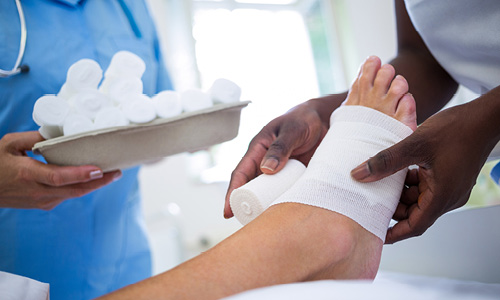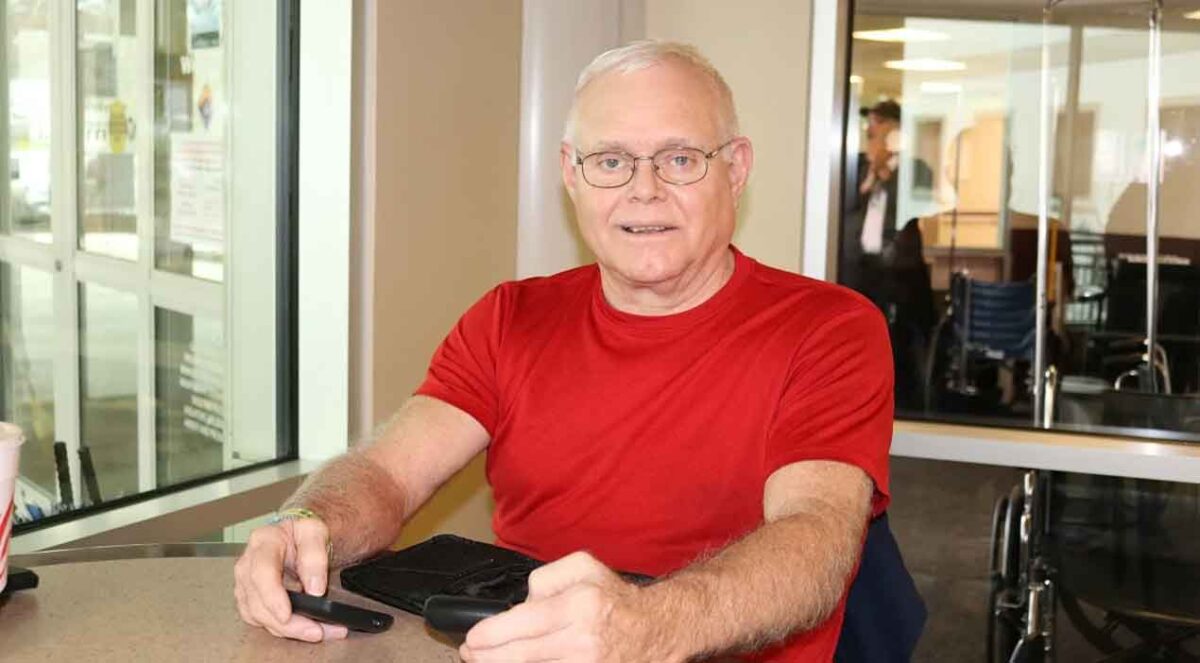An estimated 30.3 million people in the United States (9.4 percent of the population) have diabetes, including 7.2 million who are unaware they are living with the disease. The percentage of adults with diabetes increases with age, reaching a high of 25.2 percent among those aged 65 years or older. In addition to age, risk factors for diabetes also include diet, activity level, obesity and heredity.
Diabetes may be accompanied by other co-existing conditions such as blindness, heart disease, kidney failure or lower-limb amputation. High blood sugar levels, poor circulation, immune systems issues, nerve damage and infection may contribute to a non- healing diabetic foot ulcer. Approximately 25 percent of people living with diabetes will develop a foot ulcer. Diabetic foot ulcers have a very high recurrence rate: As many as 40 percent of people with a healed diabetic foot ulcer will develop a new ulcer within a year. Diabetic foot ulcers can be challenging to heal.
Diabetes is the leading cause of limb loss, accounting for 65,000 amputations annually. Up to 55 percent of diabetic patients will require amputation on the second leg. Even more alarming, within two to three years, nearly half of those living with an amputation will die.

There are several common factors of diabetic foot ulcers, including neuropathy, peripheral arterial disease (PAD), deformities and Charcot foot. Neuropathy is a result of damage to peripheral nerves and often causes weakness, numbness and pain in hands and feet. Similarly, PAD is caused by narrowed arteries which reduces blood flow to the limbs. Charcot foot is a deformity that results from nerve damage in the foot or ankle, which may cause injuries to go untreated, leading to the breakdown of joints.
The Logansport Memorial Wound Care Center® recommends the following to help prevent diabetic foot ulcers:
- Stop smoking immediately
- Comprehensive foot examinations each time you visit your healthcare provider (at least four times a year)
- Daily self-inspections of the feet, or have a family member perform the inspection
- Regular care of the feet including cleaning toenails and taking care of corns and calluses
- Choose supportive, proper footwear (shoes and socks)
- Take steps to improve circulation such as eating healthier and exercising on a regular basis
Proper wound care techniques are imperative to healing diabetic foot ulcers. Debridement, Offloading or Total Contact Casts (TCC), Negative Pressure Wound Therapy and Hyperbaric Oxygen Therapy (HBOT) are a few of the leading-edge treatments offered at our Wound Care Center®. Debridement, the removal of damaged tissue, is widely recognized as one of the most important methods of advanced wound care. Total contact casting, also known as off-loading, relieves pressure from the wound and is considered the gold standard for the treatment of diabetic foot ulcers. Finally, hyperbaric oxygen therapy is where a patient receives 100-percent oxygen and an increased atmospheric pressure inside an acrylic chamber. These specialized therapies can aid in wound closure, new tissue growth, wound tissue regeneration and much more.
For more information about diabetic foot ulcers or how we may be able to help avoid amputation, contact the Logansport Memorial Wound Care Center at (574) 753-1331 or visit logansportmemorial.org/wound-care.




